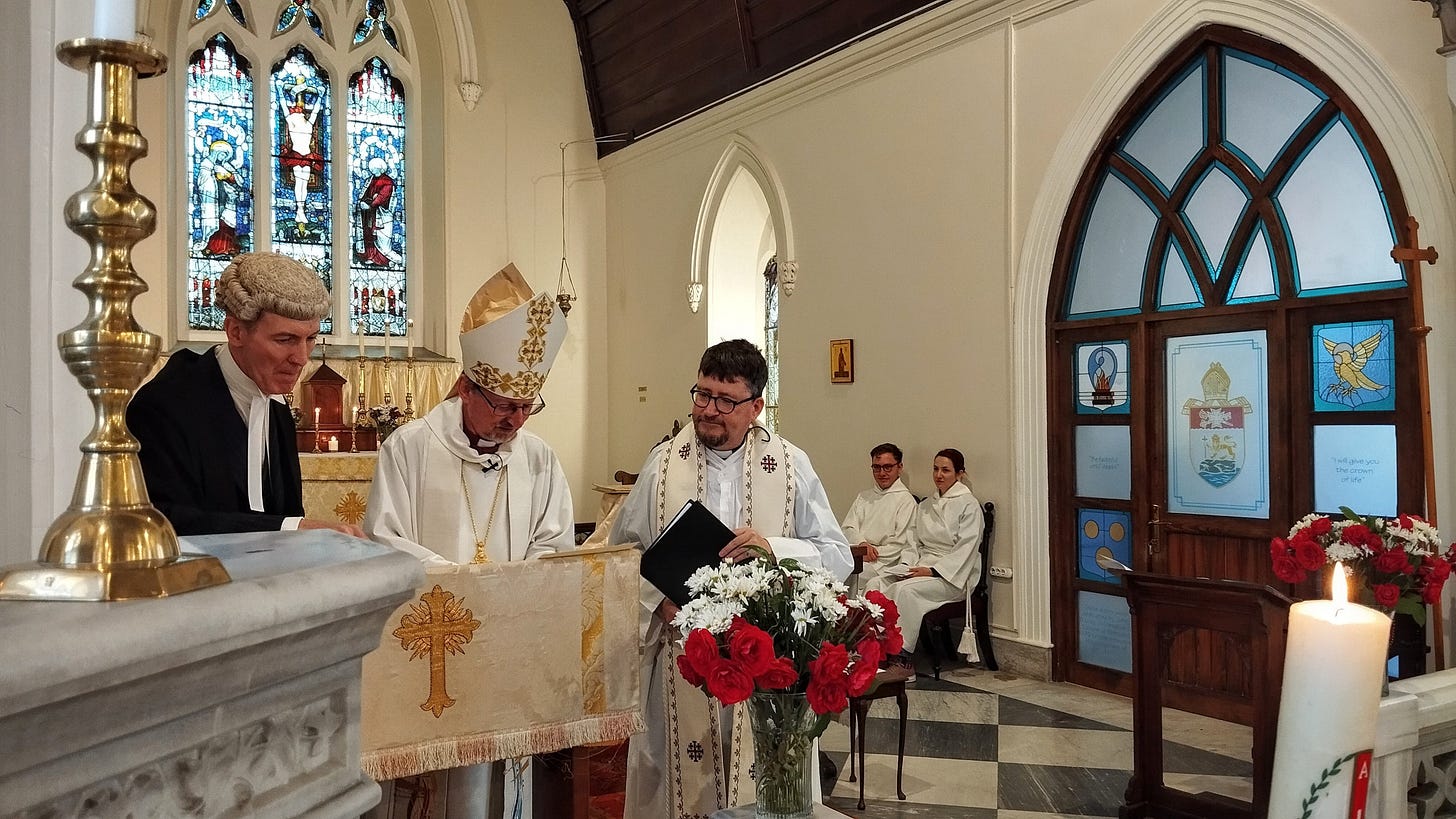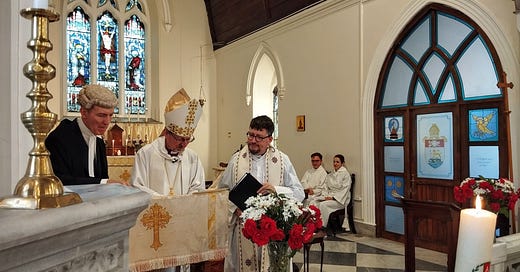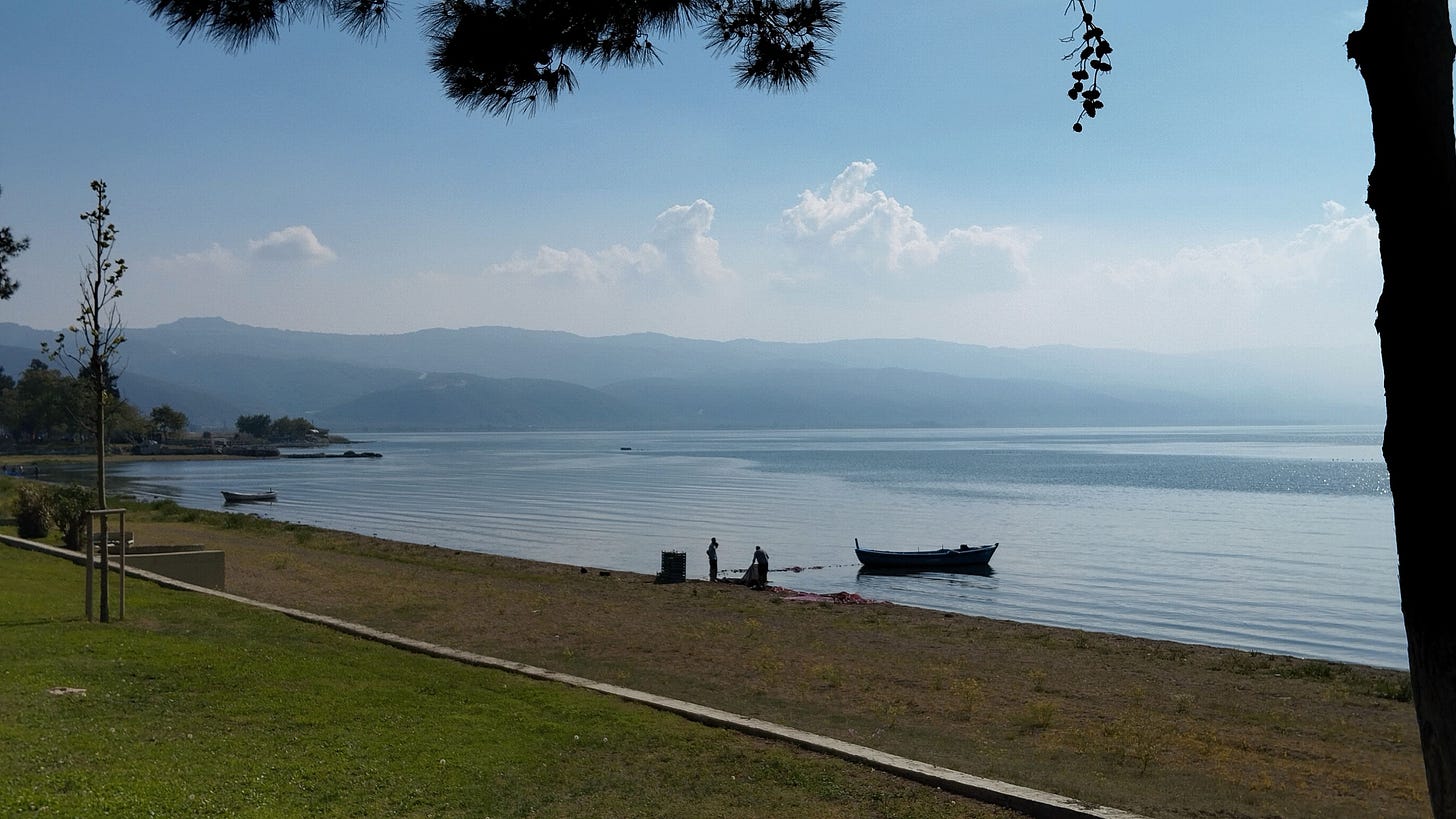Close Reading: The Nicene Creed - a look back 1,700 years
A visit to Iznik, Turkey, gave me a chance to look back on the first, great Christian synod of 325 and reflect on my church today.
Last summer, I returned home to the United States after two very full years here in Turkey. My first Sunday back, I worshipped in my old church, McKendree Memorial United Methodist in Portland, Tennessee.
It was such a blessing to see old friends and sing in the choir again. It was natural. Another Sunday in my home church.
But one significant thing had changed.
While I had been in Turkey, the United Methodist Church had undergone a schism over issues of sexuality and gay marriage. My home church had stayed with the denomination, but it had lost members to a more conservative union of methodist churches.
It wasn’t the only religious division I had seen in my country. During the COVID Pandemic, debates over masking and vaccinations had spilled into churches and sent congregants looking for safer or saner communities. Other political and racial divisions were evident in American churches, and 11:00 on Sunday mornings has been known since the 1950s as “the most segregated hour in Christian America,” which today extends beyond race to gender, sexuality and political affiliation.
Getting to Nicea 325
I describe these current conflicts to share the burdens I brought with me to Nicea on a recent visit (as described in this travelogue).
One doesn’t need to know much of Christian history to understand that deep divisions grew among believers from the very beginning. The remarkable thing about Nicea was its existence at a time when Christians still cared about The Church and sought to use synods and the power of debate to work out complex theological problems. Nicea also had an emperor, Constantine the Great, chairing the council, meaning that the State had a stake in orthodoxy.
Given the state of the world in the 4th Century CE, when it took theological ideas years to circulate and be scrutinized and it took a week or more to travel 100 miles overland, the idea of a global council of bishops must have seemed inconceivable. Yet Constantine and the bishops of his day, 318 of them from Europe, Asia and Africa, pulled it off.
Their efforts are still a part of Christian worship 1,700 years later.
The Nicene Creed and its Forebear
In my Methodist church in the States, we recited the Apostles’ Creed (AC) during the service each week, a 105-word statement of belief that outlines the role of God the Father, Jesus Christ, and the Holy Spirit (known together as The Trinity) as well as the unity of the church. When I moved to Izmir and joined an Anglican community, I recited the Nicene Creed (NC) every Sunday. While I had memorized the AC easily in my former church, the NC is longer, and I still must read the text, even after three years’ practice.
Here is a look at the two creeds. It is the best exemplar of the significant developments in Nicea in 325.
The AC was written in the 2nd & 3rd centuries of the Christian faith, a time with the memories of the apostles and their immediate disciples were fresh in the minds of believers. The orthodoxy of believers was preserved through the circulation of letters written by these Church Fathers, although no canon of writings had been set.
It was also a time of Christian persecution, which arose in unpredictable spurts every 30 years or so. The AC was a statement of belief that was sometimes used as a prayer, often used as a guide for candidates seeking to join Christian communities through baptism (as it was for my own sons when they joined the United Methodist Church).
One of my favorite legends about the AC is based on the 12 tenets of belief that it states. Tradition held that the creed had been developed by Jesus’ 12 closest followers or apostles — that each of them had added a clause until the creed was complete.
By the age of the Council of Nicea, the ‘apostolic church’ was a distant memory; the church had a much wider membership. Persecution had ended with the Edict of Milan in 313. Indeed, Constantine’s refunification of the Roman Empire in 324 had thrust the church into an unprecedented role in Roman society, even as many of the bishops in attendance still carried the scars of the final mass persecution of Christians by the Emperor Diocletian (303-311).
A powerful movement had arisen, inspired by an elder in the Alexandrian church named Arius (256-336). Arius challenged a key idea of the Trinity — a question about the nature of Jesus: was he equal in span and power to God, or had Jesus been created, too?
A short look at Christology related to Arianism
Christians celebrate a day when Jesus was born every year at Christmas, but John the Evangelist begins his gospel with the words, “In the beginning was the Word and the Word was with God and the Word was God.” This idea is a key text in the development of the Trinity (“the Word was with God and… was God”). In modern terms, God cosplayed as a human — birth, life experience, and death — in order to redeem humanity.
From the moment of the Resurrection, Jesus’ followers had turned to Jewish scripture to reinterpret the texts they found there in the light of this new experience with God. They found details in many scriptures that anticipated Jesus’ life and ministry. For example, Isaiah 53 states:
“He was wounded for our transgressions, He was bruised for our iniquities; the chastisement for our peace was upon Him, and by His stripes we are healed. All we like sheep have gone astray; we have turned, every one, to his own way; and the LORD has laid on Him the iniquity of us all.”
The context of the scripture is the expulsion of Israel from their homeland by the Kingdom of Babylon. “Our iniquities” are the misdeeds of a nation that led to expulsion, “we like sheep [who] have gone astray” are Judeans.
Yet it is an easy leap for Christians to link “he was wounded” to the passion of Jesus Christ. The lens of Jesus’ resurrection made this text about more than a Jewish hero rescuing his people from exile. The ‘we’ and ‘us all’ became humanity itself.
Another one of the texts that Christians had reinterpreted was Proverbs 8, in which holy wisdom calls out to its readers. Verses 19-21 can easily be reinterpreted as the voice of Jesus — they are similar to his claims in the book of John:
My fruit is better than fine gold;
what I yield surpasses choice silver.
I walk in the way of righteousness,
along the paths of justice,
bestowing a rich inheritance on those who love me
and making their treasuries full.
But the next four verses posed a problem to Trinitarians who held that Jesus was the same as the Father:
“The Lord brought me forth as the first of his works,
before his deeds of old;
I was formed long ages ago,
at the very beginning, when the world came to be.
When there were no watery depths, I was given birth,
when there were no springs overflowing with water;
before the mountains were settled in place,
before the hills, I was given birth.” (New International Version)
This scripture was hugely important for early Christians. There is a basilica in Iznik today, built about 60 years after the council, called “Hagia Sophia,” or holy wisdom. The more famous Hagia Sophia, the most historic and spectacular cathedral in Christendom, has stood in Istanbul for almost 1,500 years.
Holy wisdom was important to early Christians; they celebrated Proverbs 8 universally as a foretelling of Jesus’ message. Arius and his followers used this scripture, among others, to state that Jesus was a junior figure in the godhead — or at least a created one. They accepted John 1 (“in the beginning was the Word”) and the creation story from Genesis where God says, “let us make mankind in our image.”
The opposition to Arias was led by Athenasius of Alexandria who felt that the whole edifice of Christianity might fall down a slippery slope if Jesus wasn’t seen as eternal and equal in all things with God.
Nowadays, the Arian Christians would move across town to their own church and continue worshipping as they pleased. In the 4th Century, however, a unified church saw this as an existential challenge: Constantine called the bishops to council and the Nicene Creed was hammered out to state explicitly what all Christians were expected to believe about Jesus.
Notice the 42 words added to the AC that dwell on the nature of Jesus, spelling out precisely Jesus’ relation to God the Father:
The NC uses twice as many words to describe the nature and the life of Jesus than the Apostles’ Creed.
“Eternally begotten of the Father…” — the words, ‘eternally begotten,’ seem like an oxymoron, as if God begat, begets and will continue to beget Jesus from and into eternity.
“Light from Light, true God from true God...” Note the emphasis on Jesus’ equal status in the godhead here — the creed is eliminating theological wiggle room with this clause.
“Begotten, not made, of one Being with the Father; through him all things were made…” — the word, ‘begotten,’ appears for the 2nd time in the sentence, demonstrating its importance to this creed.
“For us and for our salvation he came down from heaven…” — this is an allusion to the slippery-slope argument that Athenasius had set forward. The whole purpose of clarifying the word, begotten, is that salvation somehow doesn’t work if God didn’t die on that cross. If a created being — even one created before Earth and Heaven — had died there, salvation wouldn’t be certain.
I pause to emphasize here that I am a reader, not a theologian. I’m trying to interpret the words as they were intended by the writers in 325, based on my study of the Council of Nicea.
The Apostolic Church
A final note about the difference between the NC and the AC. In the final expression, it declares, “We believe in one holy catholic and apostolic Church.”
The AC had referred to a ‘catholic’ or universal church. The Nicene writers added the words, “and apostolic,” to this clause. This implied a direct line from Jesus through his first students, known as disciples or “apostles,” and through their students down to the present day: a continuous line of orthodoxy.
In 325 AD, this line of orthodoxy could be traced in the same way one might have a family tree. A bishop had learned from a previous bishop, who had learned from a previous apostolic bishop… and had learned from… all the way back to one of the apostles, who had been a student of Jesus himself. The term, ‘apostolic,’ then had authority: it was a hedge meant to keep out ideas like Arianism that couldn’t trace themselves back to the religion’s founders.
Personal Thoughts on the Creed
Three times in the gospels, Jesus posed a question to his students: “Who do you tell people that I am?” (Matthew 16:13-16, Mark 8:27-29, and Luke 9:18-20).
It was a tough question for Jesus’ students, who told him he might be a prophet come to life from scripture, only Peter answered, “You are the Messiah, the son of the living God” — an answer that Jesus affirmed.
The Council of Nicea shows that Christians were still working out Jesus’ identity — and what that means for his followers — almost 300 years after he had posed that question. Was he God? Was he Man? Pope Leo I would describe Jesus in a letter to the Council of Chalcedon in 451 as “fully God and fully man,” an NC-based description that settled the matter for western Christians to this day.
But that description walks the knife’s edge of reason and most Christians — like most churches and church councils — lean towards Jesus as mostly man or mostly God. The more authoritarian strains of the faith emphasize Jesus as God; liberal, social-justice Christians emphasize Jesus as man.
Jesus was a man, described in a collection of writings called the Gospels, who through a series of remarkable events at the end of his life — a resurrection from the dead, and a sudden religious awakening at Pentecost 40 days later — transformed for his students into God.
If anything, visiting Iznik/ Nicea gave me a chance to marvel at the logistics of gathering Christians from throughout the Christian world — Armenia, Greece, Phoenecia, Egypt and Cappadochia, among others. (The bishop of Rome was absent due to ill health, but Hosius of Cordoba made it all the way from Spain.) In this beautiful walled city on a lake, the Christian church was “holy, catholic and universal,” and that’s something that hasn’t happened in a long, long time.

A Moment of Unity
Two weeks after I returned from Iznik, we had a special ceremony at my church in Izmir. My chaplain was named a “canon” in the Church of England. For the service, the bishop of the European diocese came out along with two Anglican bishops from the London area as well as the Orthodox Metropolitan of London — all who had come for a pilgrimage to Nicea and the seven churches led by the honored Izmir chaplain.
Besides the visitors from the United Kingdom, representatives of the local Christian communities in Izmir came for the occasion: the Orthodox and Catholic clergy from Izmir attended. All were there to recognize the ministry of my pastor, Father James Buxton, who has done so much to knit bands of Christians together in this huge city.
As we prepared for Communion, we recited the Lord’s Prayer, and congregants were invited to pray in their own languages. My ears filled with Greek, Russian, Turkish, French, and English speakers praying the same prayer to the same God.
And with the words, “thy Kingdom come,” my heart filled with the spirit of Nicea — “one holy catholic and apostolic church” — and I saw clearly how such a church, made up of people from every tribe and language and political persuasion, could be united in one creed and one prayer.
I’m not quite finished with Nicea. There were several other important decisions made there that connect with Izmir and modern Christianity: setting the date of Easter, and the 20 canons or directions to local churches that the council gave to Christian churches.
Read my reflection on the Easter Controversy and the 20 Canons of the Council of Nicea.
Thanks for reading!






Wonderfully written article JD! I certainly appreciate your detailed explanation and teaching expression. I believe God chose you to go to Izmir. I believe you are God-driven to share with the world this way of understanding our history and our path towards Christ’s way forward in this life.